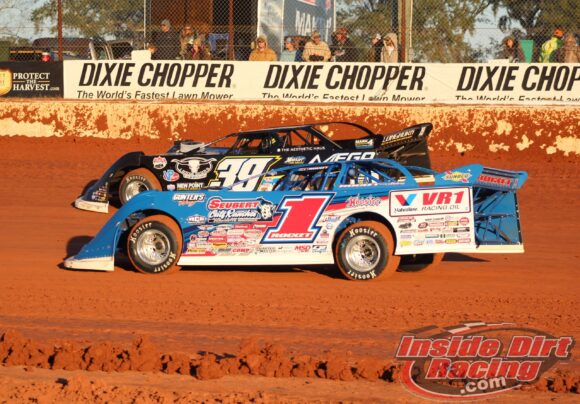The term ‘House Car’ is one that has been around for many years in Dirt Late Model racing. Most of the different chassis builders have one team that carries that title. The purpose of having such is, in theory at least, to try new setups or designs then to share that information with the other teams who employ that particular type of car.
In recent weeks there has been much news surrounding the house cars of the two most recognizable brands on the market.
Brandon Sheppard was recently named as the driver of the Longhorn Chassis house car beginning next season. After a season of driving a Longhorn for Sheppard Riggs Racing, the label of house car will now be affixed to the four-time World of Outlaws CASE Construction Late Model Series champion’s ride. Two-time and defending Lucas Oil Late Model Dirt Series champion Tim McCreadie and his Paylor Motorsports team has held that designation for the past few seasons.
Also, news was made when Hudson O’Neal won this form of racing’s most prestigious event, the World 100, at Eldora Speedway this past Saturday. It was the first victory in that much coveted race for the otherwise highly successful Rocket Chassis house car.
The common belief behind the whole idea of having a house car would seem to be that it helps to sell more chassis. The better the house car performs, the more likely a potential customer might be to buy that type of car believing they will also acquire the setup employed by the house car team for the purpose of improving their own performance. There is the potential for a win-win situation as the chassis builder sells a car and the customer sees improved performance.
Obviously, the pros of running a house car program is to sell more cars and for the chassis builder to have central place to serve as a hub for ideas being bounced around that can help everyone with that chassis brand.
But there can be some cons as well. As was evidenced during Tuesday night’s Castrol FloRacing Night in America event at Fairbury Speedway, there can be times in which the house car and a team who uses that same brand of car have an on-track incident.
Hudson O’Neal was racing hard within the top-3 with Rocket Chassis driver Garrett Smith. Contact between the two resulted in even more contact between the two with both cars ultimately being dropped from contention when each looked like a potential race winner. In a story posted on DirtonDirt.com, both insinuated that the blame lay with the other.
Although the stated purpose of a house car may be to assist everyone using that brand, that team, no matter which chassis, is a competitor trying to win races just like everyone else on the track. If all those cars are equally, or near equally, competitive there are bound to be times in which they come in conflict.
Dirt Late Model racing presents this strange scenario of a customer buying a car from someone who will at the same time be his competitor. If the customer sees the house car or another of that brand running well while he is not, there could be the concern that all the secrets are not being shared equally within the camp.
The cons of running a house car program are that of a potential run-in with a customer on the track and doubts raised if one car is outperforming the others.
It seems as if running a house car program is worth risking any potential cons that might arise or else the chassis builders wouldn’t do it. It’s a way to show off the latest and greatest new builds as well as a way to test setup ideas and help provide for the needs of customers.
Please consider also reading:
Respond to this post on Twitter by following @RichardAllenIDR and @MichaelRMoats or by liking the InsideDirtRacing.com Facebook page.
Also, NASCAR and pavement racing fans can check out InsideCircleTrack.com






